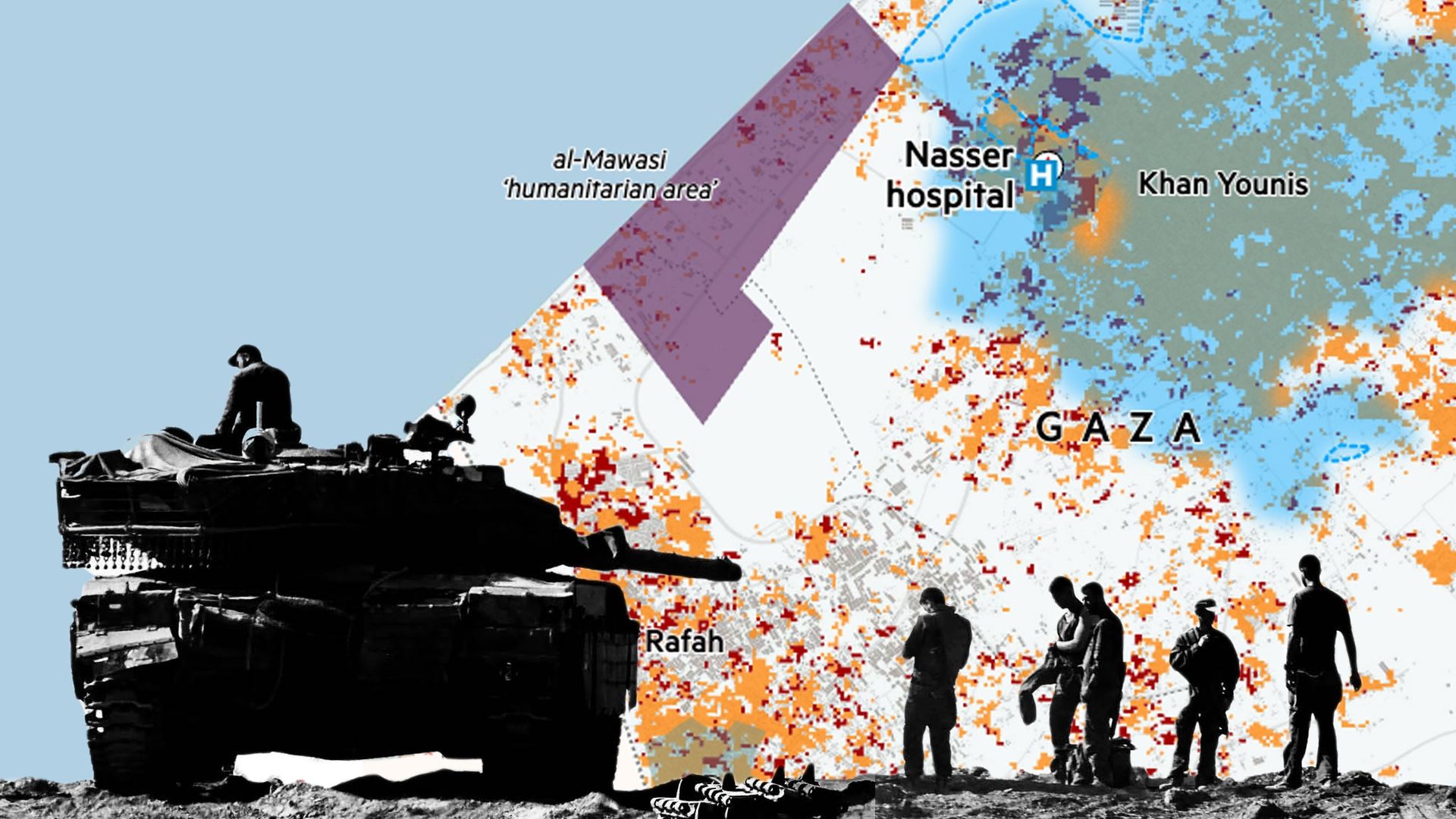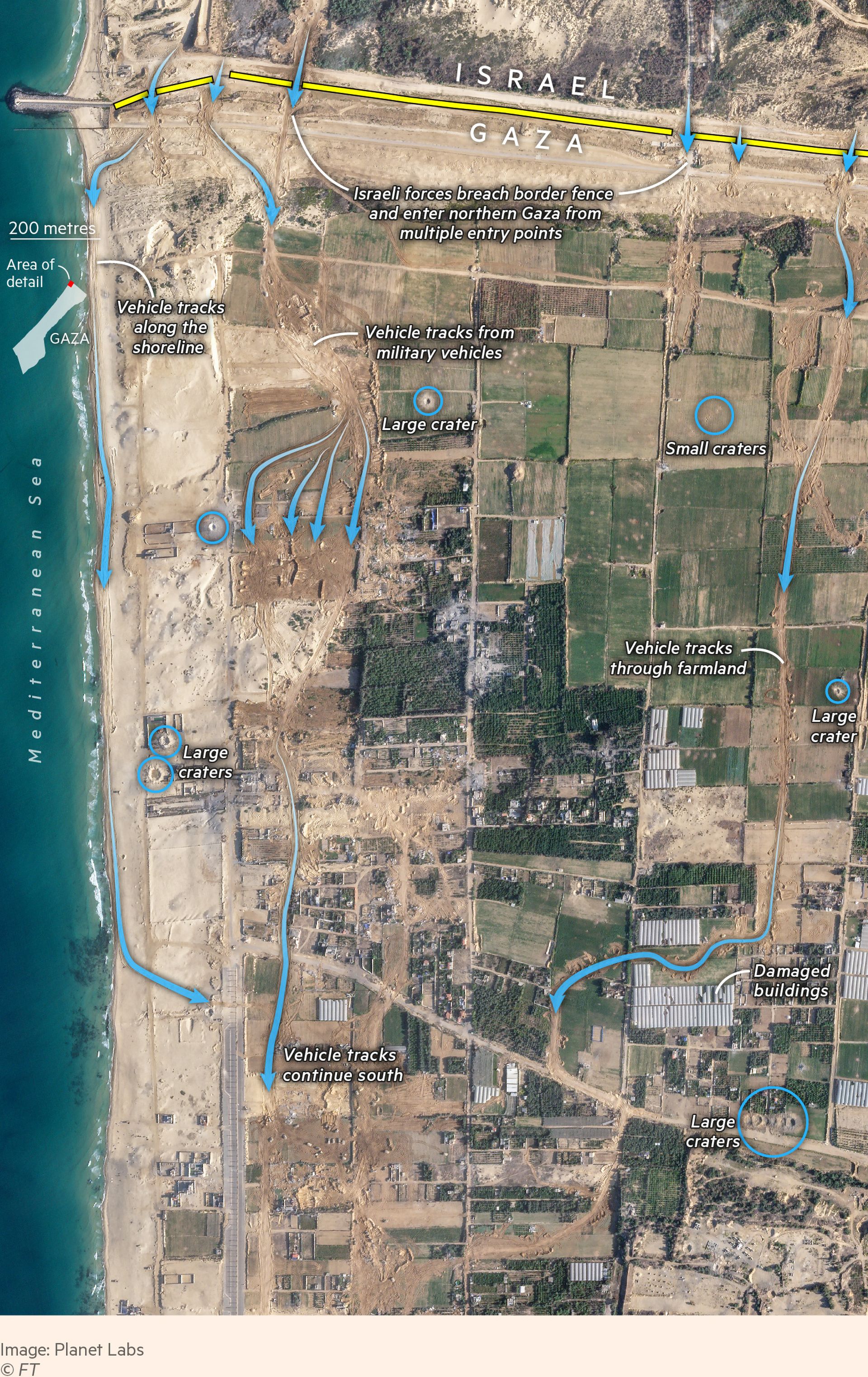Latest situation
The UN’s top court has ordered Israel to “immediately halt” its military offensive in Rafah, the southern Gazan city that had become a refuge for more than 1mn civilians since the war between Israel and Hamas erupted last year.
Despite intense international pressure to refrain, Israeli forces entered the city earlier this month, with officials insisting the assault was necessary to defeat Hamas, which triggered the war with its October 7 attack on Israel.
However, in an order issued in response to an urgent request brought by South Africa, the International Court of Justice said on Friday that conditions in Rafah were “disastrous” and instructed Israel to stop.
The court also ordered Israel to reopen the Rafah crossing between Gaza and Egypt to allow “unhindered provision at scale of urgently needed basic services and humanitarian assistance” and to allow investigators into the enclave.
Israel’s incursion in Gaza: October 2023 to present
Israel’s defence forces launched air and land offensives in Gaza after Hamas’s brutal October 7 attack in southern Israel.
Hamas killed more than 1,200 people and seized around 250 hostages, according to Israeli officials. The IDF’s response has killed more than 34,000 people in Gaza, according to Palestinian officials.
A temporary truce between the two sides in November allowed for the release of around 105 Israeli women and children as well as foreigners held hostage. This was in exchange for about 240 Palestinian women and children freed from Israeli jails.
The killing of humanitarian aid workers during the conflict has triggered a wave of international condemnation and renewed scrutiny of the conduct of Israeli forces in Palestinian territories.
Israel’s military has carried out one of the largest bombing campaigns in history on the small, blockaded enclave.
Satellite data shows the toll the war has taken on Gaza’s infrastructure and homes, with much of the Palestinian enclave’s two biggest cities in ruins, including entire neighbourhoods destroyed.
Israel’s military has been tight-lipped about how many troops it has committed to the war — its biggest operation in years — but satellite imagery and tracking data show a significant incursion.
Data tracking the movement of Israeli forces between October 31 and March 12 shows them tightening their hold on Gaza City, surrounding al-Shifa hospital and taking large swaths of territory in Khan Younis in the south.
Satellite imagery published from October 31 shows that after breaching the barrier wall in at least six places, Israel’s columns cut through Gaza’s sparsely populated farmland to the south of the border, before moving deeper into the strip towards more populated areas.
Aid agencies have warned about the dire humanitarian conditions in Gaza, including a lack of sufficient water, food, medicine and fuel.
Israel’s preparations to launch a new offensive in Rafah in southern Gaza have raised fears of additional harm to Palestinian civilians.
Gaza’s sole power plant went offline on October 11 due to a lack of fuel, with the outage captured by night-time satellite imagery.
Hamas’s attack on Israel: October 7 2023
As much of Israel slept, Hamas militants launched an unprecedented, multipronged dawn assault on the country from the Gaza Strip. The Middle East’s most powerful security force was caught off guard.
Launched on the Jewish holiday of Simchat Torah, the assault began in the early hours with thousands of rockets fired at Israeli towns and cities. The barrage set off warning sirens across the south and centre of the country, sending citizens fleeing to air-raid shelters.
Israel’s military said Gaza-based militants launched more than 4,500 rockets over that weekend. Many were intercepted by Israel’s Iron Dome defence system, but satellite imagery showed fires and plumes of black smoke rising from some locations that had been hit.
Hundreds of Hamas fighters simultaneously attacked by land, air and sea, repeatedly breaching the fortified barrier between Gaza and Israel.
Images and videos showed motorbikes carrying armed militants riding through a hole in a wire fence along the border and a bulldozer destroying part of the barrier. Bombs, rockets and drones could also be seen blowing up the fence as well as defensive positions.
Militants used motorised paragliders to attack the Supernova music festival, not far from the Gaza border, flying in and turning the two-day rave into the site of a massacre.
Gunmen chased young Israelis across the desert, shooting and snatching people to take back to Gaza as hostages. The Israeli military failed to respond for hours, apparently caught by surprise by the attack. Hundreds of bodies have been recovered from the site.
After breaching the Gaza fence, armed Hamas fighters began targeting Israeli communities at several locations, going door-to-door and taking hostages. The Hamas militants also attacked Israeli military sites.
Images and video show people lying dead in the streets after execution-style killings and residents including women, children and the elderly being taken away.
More than 1,200 Israeli civilians and troops were killed, the IDF said — making it the deadliest attack on the country since its foundation.
The complexity of the assault by Hamas was unlike anything Israel has witnessed in decades. It raised serious questions about the security service’s intelligence gathering and the military’s preparedness for an attack.
Israeli Prime Minister Benjamin Netanyahu imposed a “complete siege” on Gaza on October 9, calling up a record 300,000 reservists and ordering the strip to be pounded from the air.
Israel’s military also ordered the evacuation of 42 communities along its northern border, where Israelis have died in cross-border fire that Israel blamed on Hizbollah or Lebanon-based Palestinian factions — part of the Iran-backed “Axis of Resistance”.
Visual and Data team: Aditi Bhandari, Jana Tauschinski, Janina Conboye, Peter Andringa, Steven Bernard, Chris Campbell, Sam Joiner, Lucy Rodgers and Alan Smith



